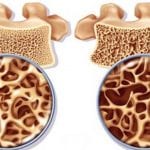The Mayo Clinic staff warns that not everyone has all these heart attack symptoms. Sometimes, the symptoms may appear suddenly or they may happen over a number of days and weeks. For any unusual chest pain, you should call the emergency services.
Treatment and Recovery Time for Pulled Muscle in Chest
Treating a pulled muscle in your chest usually involves plenty of rest to prevent more chest and shoulder pain. When your pecs are tender and sensitive after an injury, they are at more risk of suffering a more serious injury.
R.I.C.E.
In most cases of a pulled muscle in the chest or another area of your body, the Sports Injury Clinic advises the R.I.C.E. method to relieve pain and promote healing. The RICE method stands for Rest, Ice, Compression, and Elevation.
You can use the R.I.C.E. method this way to get pain relief and help the pulled chest muscle heal quicker:
Rest. It’s important to rest from all physical activity that could strain the pectoral muscles further. If any movement of your arms or upper body causes more chest pain, you should try to restrict these movements. This step is essential in the healing process.
Ice. Ice packs can help to restrict blood flow to the damaged chest muscles and prevent bleeding and inflammation and relieve pain. You can use a bag of frozen vegetables or crushed up ice in a sealed plastic bag. Remember, never to place the ice pack directly on your skin but wrap it in a thin towel. Apply for 10-15 minutes at a time every hour for the first 2 days.
Compression. If possible, wrap an elastic bandage around the affected area in your chest to help reduce any swelling. The compression bandage will also help to restrict excessive movement of your chest muscles.
Elevate. If possible, sit up straight to help your blood circulation and promote healing in the affected areas.
Surgery
In cases of a severe muscle pull in your chest, doctors may recommend that you have an MRI scan done to see the extent of the muscle tear. In some cases, surgery is required to repair the damaged pectoral muscle and restore movement and strength to the affected muscle.
How long does a pec strain take to heal?
With the proper care, a pec strain should heal within a few weeks. However, if you have suffered a severe muscle pull in your chest, it may take longer. PhysioAdvisor.com says that a severe pectoral strain or tear could take some months to heal. If you have had surgery to repair a complete muscle tear, then it could take up to 9 months to heal completely.
How to Prevent Pulled Pectoral Muscles
In many cases, it is possible to prevent pulling a pec muscle in your chest. Keeping your muscles well-exercised and avoiding overstretching are just some ways you can prevent damaging your pectoral muscles.
Dr. William Blahd on WebMD recommends some steps to prevent pulling chest muscles. For example, it’s important to always warm up before exercising and stretch afterward.
Physiotherapists recommend some ways of preventing pulling a pectoral muscle and these include:
- Having the proper posture when sitting, standing, or lifting heavy objects.
- Strengthening your core muscles.
- Avoiding straining your pecs by not exercising excessively.
- Use proper training techniques, especially when lifting weights and performing bench press.
- Make sure that you fully recover after any injury of a chest muscle.
When to See a Doctor for Muscle Pain in Your Chest
Most cases of a pulled chest muscle are resolved when you treat the injury properly and get enough rest. However, in some cases, you should visit your doctor for muscle pain in your chest. Dr. William Blahd recommends seeing a medical professional for chest muscle injury in the following situations:
- There is significant swelling or pain in your chest.
- You hear a popping sound with the injury.
- You suffer a traumatic chest injury.
- Home remedies for pain relief don’t help in the first 24 hours after injury.
- There is no discernable cause of your chest pain.
SOURCE: www.healthyandnaturalworld.com



Hi, I am experiencing this exact pain, and it has to a point where I get a sharp pain on the Pectoralis upper muscle (without even making any movement). Been going to several GPs, and they say there is nothing wrong with me. Even went to lunch tests, and all is clear.
Which specialist should I consult for such a pain?
Amazing article!